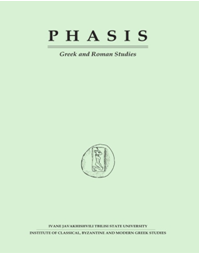This is an outdated version published on 2015-02-16. Read the most recent version.
Menschen reisen zu den Göttern, Götter reisen zu den Menschen: Religio migrans in Abonuteichos und am Schwarzen Meer
DOI:
https://doi.org/10.48614/phasis.18.2015.25-47Abstract
Three forms of religio migrans (religion on the move) are addressed in this paper: 1. When people migrate to far-off lands, they take their gods with them (‘Gods join migrant people on their journey’). 2. In their new abodes migrant people will confer an allotted place to their gods to dwell together with them; both will integrate into the neighborhood (religio translata). 3. People travel to the gods. Of the three, the third is treated most in-depth. As a point of departure the essay begins with the founding of a new cult in the Roman Empire on the southern coast of the Black Sea: the cult of the New Asklepios Glykon. Taking the narrative of Lucian as part of a persecution speech, it can be seen as a historical source that fits well in the religious history of the mid-2nd century AD. 1) illustrating the spread of the cult in the region of the southwestern coast of the Black Sea and 2) understood as a result of the cult’s attractiveness for the people from the region, who travelled to a god at the heart of a healing and oracle cult and a great festival. I continue to develop the systematic analysis of religio migrans further in respect to 3) religious tourism, pilgrimage, the attractiveness of even remote localities, language diversity, etc. within the framework of religion during the Roman Empire.Downloads
Published
2015-02-16
Issue
Section
Articles
License
Copyright (c) 2015 PHASIS

This work is licensed under a Creative Commons Attribution-NonCommercial 4.0 International License.


